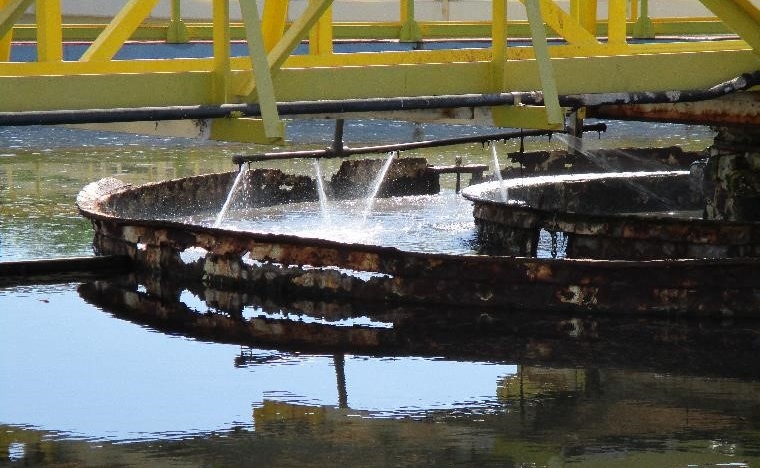U.S. EPA News Release:
EPA Announces $569 Million WIFIA Loan for Flood, Climate Resilience in the Fargo-Moorhead Metropolitan Area
Nationally, 52 WIFIA loans are financing $23 billion in water upgrades, creating 54,000 jobs
WASHINGTON (June 18, 2021) – Today, the U.S. Environmental Protection Agency (EPA) announced a $569 million Water Infrastructure Finance and Innovation Act (WIFIA) loan for a project to increase climate resilience for communities in the Fargo-Moorhead metropolitan area by reducing flood risks. This project will provide critical health and the environmental protections and create thousands of jobs while EPA’s WIFIA loan will save the community hundreds of millions of dollars.
“This project illustrates that strong partnerships can be forged through investments in water infrastructure,” said EPA Administrator Michael S. Regan. “Through water infrastructure, we can address local challenges while creating good paying jobs. Programs like WIFIA and the State Revolving Funds have a track record of success and could be scaled up to benefit more communities under President Biden’s American Jobs Plan.”
“Today’s action will accelerate the diversion project’s timeline, save hundreds of millions of dollars for taxpayers and protect North Dakota’s largest metro area from catastrophic flooding, while also providing a national model for how a major flood protection project can be accomplished with local, state, federal and private sector collaboration,” said North Dakota Governor Doug Burgum. “We’re deeply grateful to the EPA, our congressional delegation and all the partners whose hard work helped us reach this milestone.”
“Proper flood protection is key to growing the economy and protecting the livelihood of North Dakotans in the Red River Valley,” said U.S. Senator Kevin Cramer. “The Water Infrastructure Finance and Innovation Act loan announced today will go toward bolstering the water infrastructure in Fargo-Moorhead so they can be better prepared during flood seasons. I am grateful to Administrator Regan and the EPA officials who have been working on this effort for years, and I look forward to working with state and local leaders as the project progresses.”
“EPA’s WIFIA loan will serve as a low-cost, flexible funding source that better enables the project developers to move forward on building permanent flood protection in the Red River Valley, while reducing costs to local taxpayers,” said U.S. Senator John Hoeven. “We worked hard to ensure WIFIA was available for this critical flood control project, and we welcome this important milestone today.”
The Fargo-Moorhead Metropolitan Area Stormwater Diversion Channel Project includes two components to manage uncontrolled stormwater that can affect the metro area. The stormwater diversion channel component includes the construction of a 30-mile channel to re-direct and temporarily store surplus stormwater flows safely away from the metropolitan area. The in-town levee project includes modifications to 13 levees and 27 stormwater lift stations in the Cities of Fargo, North Dakota and Moorhead, Minnesota. By managing the flow of spring snow melt and summer stormwater, the project will protect 245,000 residents from flooding risks.
The Metro Flood Diversion Authority (MFDA) employed an innovative procurement approach to advance this important project by utilizing a public-private partnership (P3) model. WIFIA’s flexible loan repayment features were key in facilitating the P3 structure. This project will cost $1.3 billion and EPA’s WIFIA loan will finance nearly half of that figure. The remaining project costs will be funded by a combination of an $81 million North Dakota Clean Water State Revolving Fund loan, and over $650 million in private financing. Project construction and operation are expected to create an estimated 4,000 jobs.
“The WIFIA Loan we finalized today is an essential element of our effort. The way it is structured is a major benefit to regional taxpayers and a boost to our economy, adding benefits that extend beyond removing the ongoing stormwater threat from spring storms that coincide with early or excessive snow melt,” said MFDA Chair and Moorhead Mayor Shelly Carlson.
“This is a real job creator for our regional economy, particularly for us in Fargo and Cass County,” added MFDA Vice Chair and Cass County Commissioner Chad Peterson.
“This very important project illustrates that communities across our nation face unique challenges with respect to water infrastructure needs—from climate risks, to lead in drinking water, to wastewater management,” said Darcy O’Connor, Senior Advisor to EPA’s Acting Region 8 Administrator. “EPA is proud to support Fargo-Moorhead by providing financing that will save the community an estimated $438 million throughout the life of the loan.”
EPA’s WIFIA loan for the Fargo-Moorhead Metropolitan Area Stormwater Diversion Channel Project was announced at an event with North Dakota Governor Doug Burgum; U.S. Senator John Hoeven; Darcy O’Connor, Senior Advisor to EPA’s Acting Region 8 Administrator; and additional distinguished guests. With this WIFIA loan closing, EPA has announced 52 WIFIA loans that are providing nearly $10.5 billion in credit assistance to help finance more than $23 billion for water infrastructure while creating approximately 54,000 jobs and saving ratepayers nearly $4.5 billion.
Background on WIFIA
Established by the Water Infrastructure Finance and Innovation Act of 2014, the WIFIA program is a federal loan and guarantee program administered by EPA. WIFIA’s aim is to accelerate investment in the nation’s water infrastructure by providing long-term, low-cost supplemental credit assistance for regionally and nationally significant projects. The WIFIA program has an active pipeline of pending applications for projects that will result in billions of dollars in water infrastructure investment and thousands of jobs.
EPA is accepting Letters of Interest for FY 2021 until July 23, 2021. Approximately $6.5 billion in financing is available. For more information about the FY 2021 selection process, visit: https://www.epa.gov/wifia/wifia-funding-currently-available .
For more information about the WIFIA program’s accomplishments through 2020, visit: https://www.epa.gov/wifia/wifia-annual-report .
For more information about the WIFIA program, visit: https://www.epa.gov/wifia .
